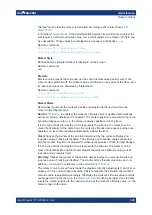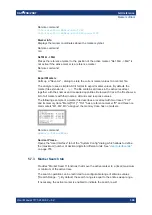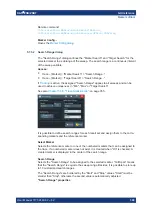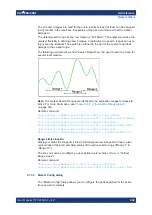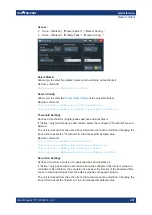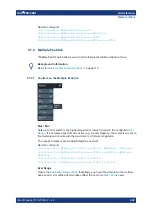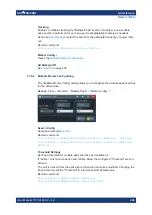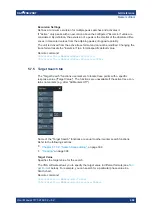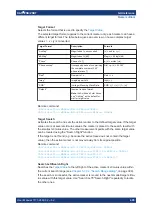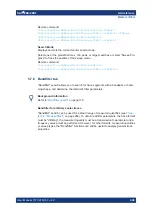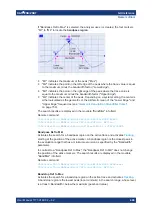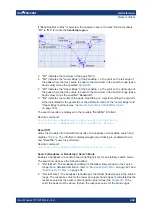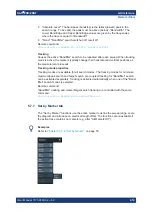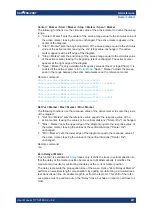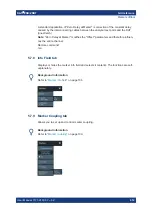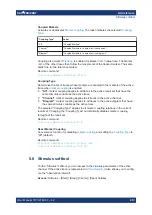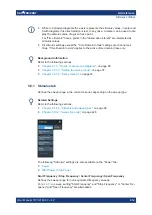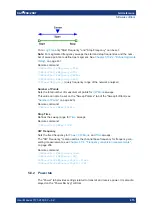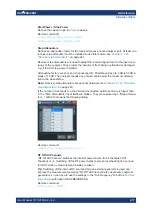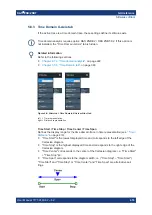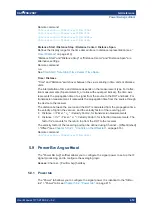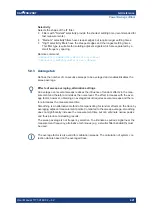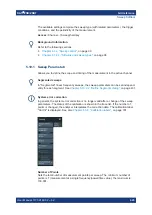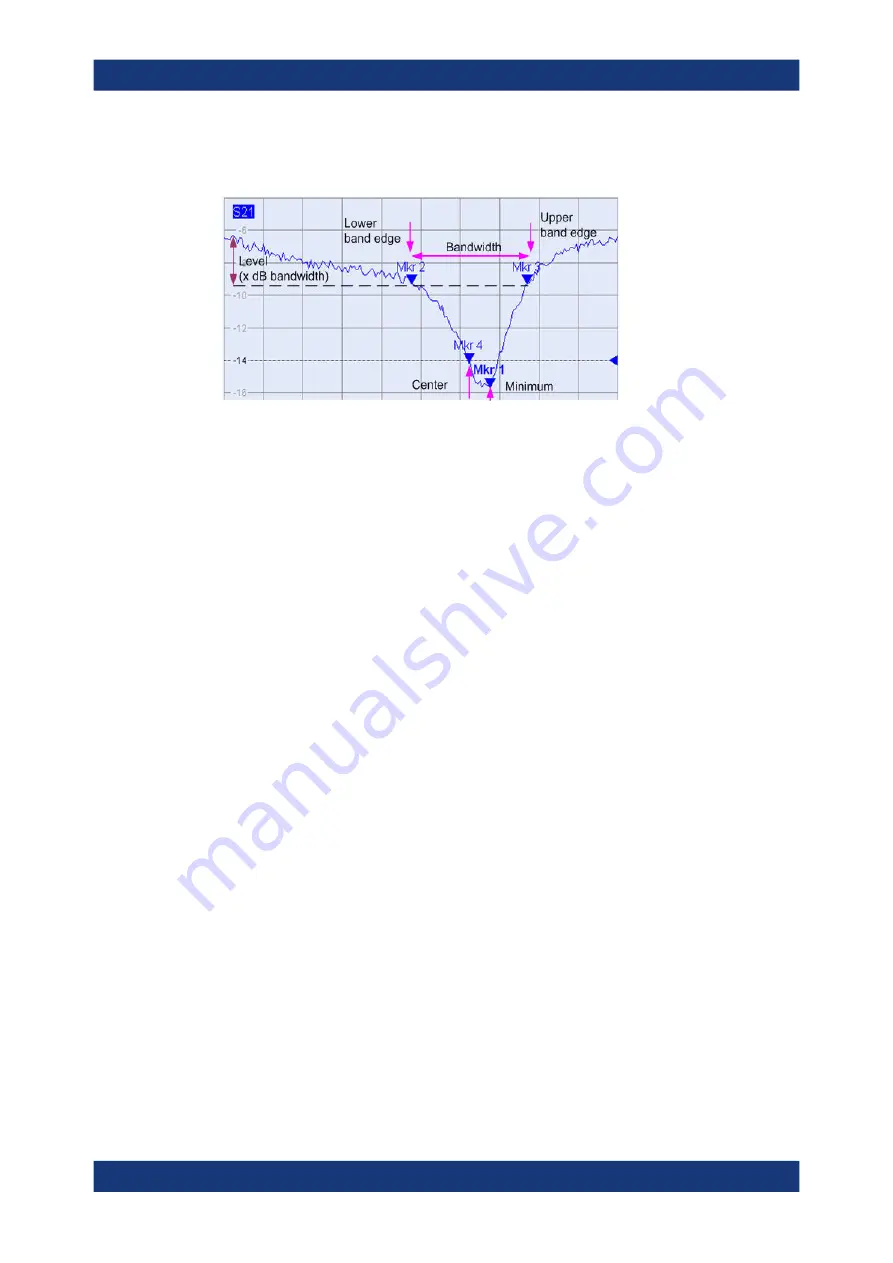
GUI reference
R&S
®
ZNB/ZNBT
409
User Manual 1173.9163.02 ─ 62
If "Bandstop Ref to Max" is selected, the analyzer uses (or creates) the four markers
"M1" to "M4" to locate the
bandstop region
.
●
"M1" indicates the minimum of the peak ("Min").
●
"M2" indicates the "Lower Edge" of the bandstop, i.e. the point on the left edge of
the peak where the trace value is equal to the maximum in the search range (pass-
band value) minus the specified
●
"M3" indicates the "Upper Edge" of the bandstop, i.e. the point on the right edge of
the peak where the trace value is equal to the maximum in the search range (pass-
band value) minus the specified "Bandwidth".
●
"M4" indicates the center of the peak. Depending on a system setting, the center is
either calculated as the geometric or the arithmetic mean of the "Lower Edge" and
"Upper Edge" positions (see
"Geometric Calculation of Bandfilter Center"
The search results are displayed in the movable "Bandfilter" info field.
Remote command:
CALCulate<Chn>:MARKer<Mk>:FUNCtion:BWIDth:MODE BSTop
CALCulate<Chn>:MARKer<Mk>:FUNCtion:EXECute BFILter
Result Off
Hides the movable info field with the results of a bandpass or a bandstop search and
disables
. The info field is displayed again (and tracking re-enabled) when a
new "Bandfilter" search is performed.
Remote command:
CALCulate<Chn>:MARKer:SEARch:BFILter:RESult[:STATe]
Search (Bandpass or Bandstop) / Search Mode
Enables a bandpass or bandstop search (left/right icon) for an arbitrary search mode.
The search modes have the following effect:
●
"Ref to Max": The bandpass (bandstop) is the tallest (lowest peak) in the search
range. For a detailed description, refer to
●
"Ref to Marker": The bandpass (bandstop) is the tallest (lowest) peak in the search
range. The response value for the lower and upper band edges is calculated as the
response value at the active marker position plus (minus) the
. To be
valid, the peak must be above (below) the response value for the band edges.
Marker softtool

